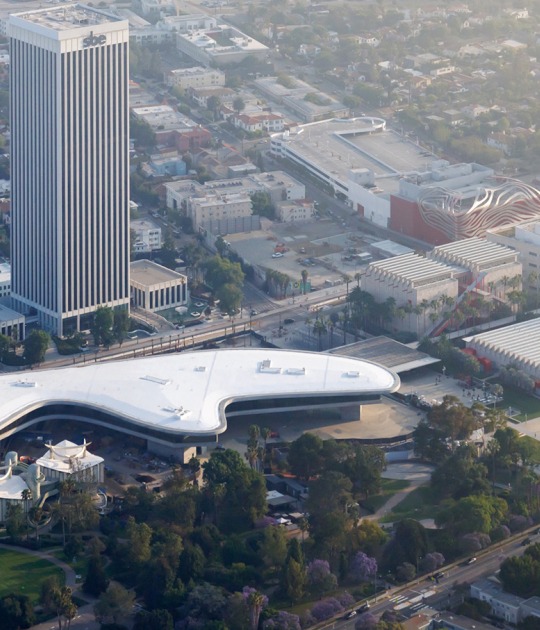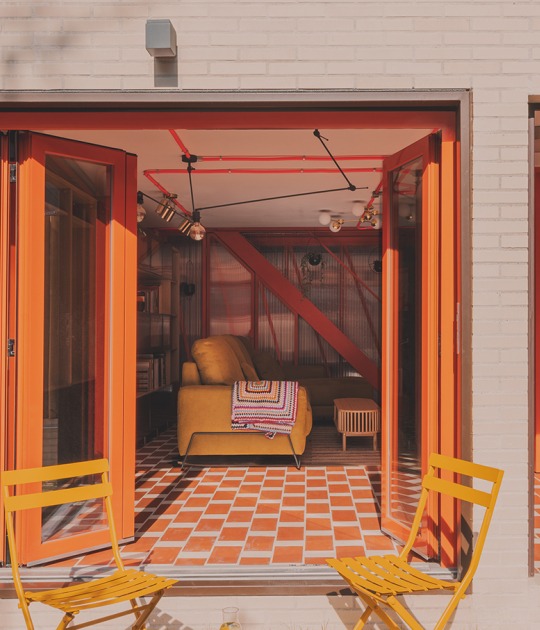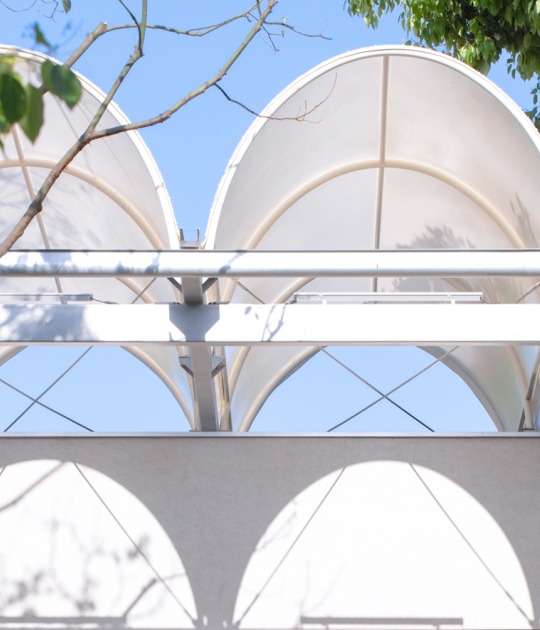
The organization and layout of the rooms and services in Anne Carrier Architecture's project are designed on a single level, featuring a central core and three wings that enable seamless circulation and universal accessibility. The windows in the wings frame the surrounding landscape, allowing users to fully appreciate the natural scenery from within.
Wood is the defining element of the building, integrated into both the structure and the interior and exterior finishes. The lightweight structural system, composed of posts and beams, supports the roof panels while also shaping the interior spaces. These spaces are clad using various techniques and colours, both to distinguish their functions and to enhance their adaptability.

Camp Mercier by Anne Carrier architecture. Photograph by Maxime Brouillet.
Project description by Anne Carrier architecture
For more than 50 years, and throughout all seasons, Camp Mercier has been a vibrant meeting place, renowned as one of the most important cross-country skiing centers in the Province of Quebec. Located 783 meters above sea level, and just 45 minutes from Quebec City, it welcomes outdoor enthusiasts, researchers, and students who come to observe the wildlife.
In 2018, the Société des établissements de plein air du Québec (SEPAQ) commissioned a study of the existing reception pavilion. The report concluded that the building had reached the end of its useful life. Subsequently, Anne Carrier architecture was commissioned to design a new pavilion that would be functional, durable, and accessible, replacing the old forest camp currently used as the reception.

Architecture in harmony with nature
The design of the pavilion evokes the old logging camps, with its wooden structure, simple volume, and low-slope roof. The lines of the dark spruce cladding, installed vertically, recall the grain of cut timber. The subtle play of fullness and voids from the openings in the wooden envelope of the building creates dynamic shadows, which shift throughout the day in response to the sun’s path.
Large openings are strategically placed to frame views of the landscape and the outdoors, to maximize sunlight, and to synergize activities inside and outside. The contrast between the dark cladding and the lighter openings reinforces the pavilion’s architectural expression, drawing inspiration from the contrasts between a tree’s bark and its core. Combining modernity and tradition, the approach reflects the architectural culture of Quebec, in harmony with nature, adapted to seasonal changes, and inspired by our ancestors.

Optimizing the use of wood
Wood, a noble and versatile material, is used for the structure, exterior cladding, interior walls, and furniture. The different spatial needs demanded different types of wood construction systems: a post-and-beam system allows for large spans in highly glazed areas, while semi-outdoor spaces, such as the wood storage, have an openwork cladding system that ensures natural ventilation. In more enclosed spaces, a lightweight wooden frame system is clad with locally sourced wood siding.
A dark stain was selected for exposed wood surfaces for durability, while a light stain was applied to the covered wood surfaces, highlighting the entrance and guiding visitors. A wood-paneled ceiling envelops the contemplation areas in warmth, while accompanying visitors on a seamless journey through the site’s activities and landscape.
This masterful use of wood earned the project the Cecobois 2025 Award of Excellence in the “Institutional Building” category. The jury described it as "a remarkable work that draws on a holistic approach. From its integration into the landscape to the construction details, wood is omnipresent, with each part finding its place in a highly cohesive whole. Engineered wood and light-frame structural systems work together with skill and relevance. The result is a beautifully harmonious project with clear lines, finely crafted both in its relationship with the site and in its interior ambience".

A new pavillion for today's needs, and rooted in its context
The surrounding landscape flows seamlessly into the pavilion, with vegetated embankments that allow for sliding during the winter, and a natural amphitheater with relaxation areas and outdoor fire pits. Special attention was given to the needs of ski enthusiasts, who are the primary users of the site. As a result, the new pavilion was built closer to the ski paths and oriented to offer better protection from the prevailing winds while maximizing sunlight exposure.
The building’s single-story layout easily allows universal accessibility, while minimizing noise pollution from the nearby road. The pavilion is integrated to the Laurentian Mountain landscape, and its efficient organization of living spaces and services in three wings with a central core optimizes circulation and operational fluidity, while offering a renewed experience to visitors throughout the year.
The new Camp Mercier embodies a vision that combines tradition and modernity, reflected through its new functions while remaining in harmony with nature and the site’s history. Through its understated, yet distinctive architectural expression, the new multidisciplinary pavilion is part of a sustainable and long-term vision for this iconic site. More than just a reception center, it has become a hub for new encounters and experiences, with the comfort of users and the harmony of nature at the core of its design.














































